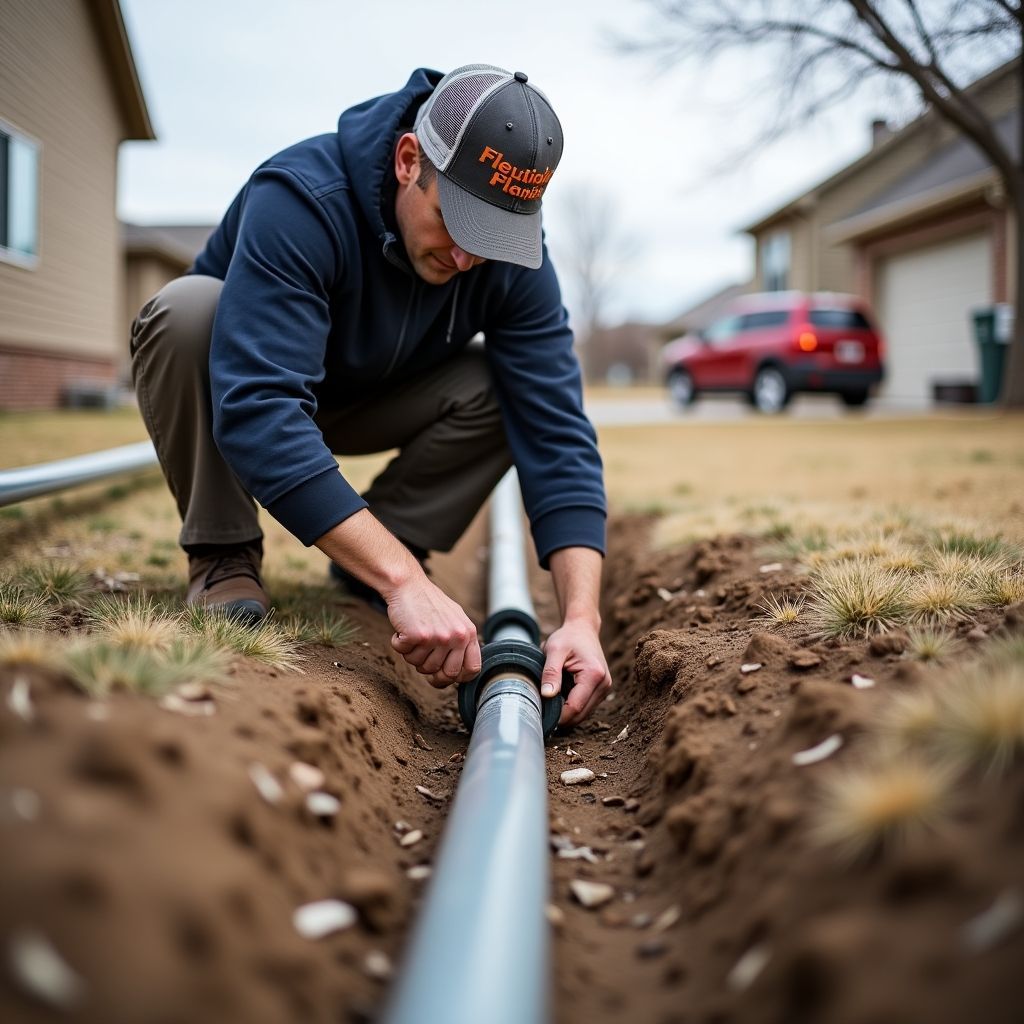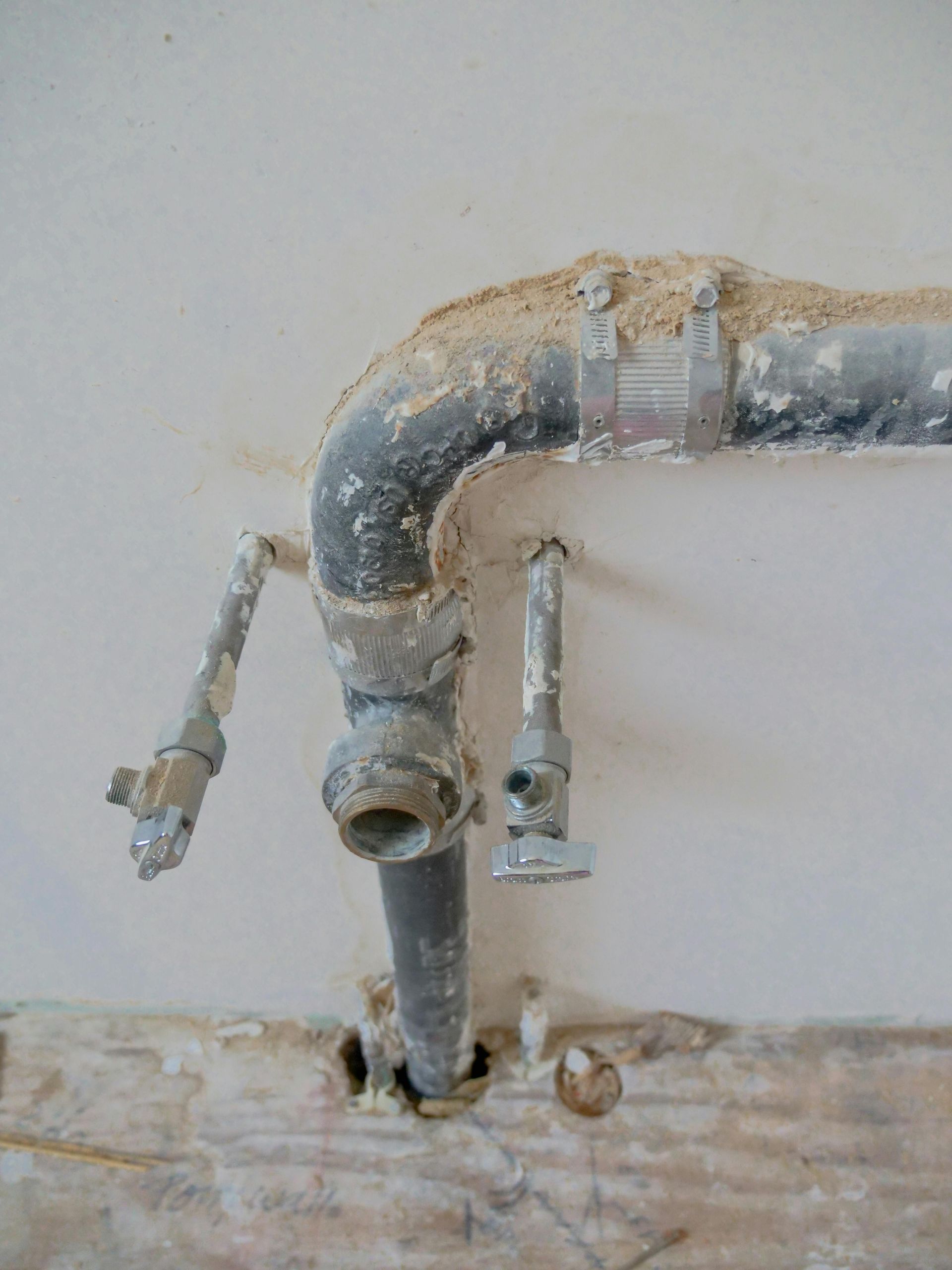Trusted Sewer Line Repair Castle Rock, CO
Our sewer line repair specialists in Castle Rock fix cracked, broken, or root-infested lines with camera inspection and trenchless solutions. Residential & Commercial sewer line help.
Expert Sewer Line Repair Services in Castle Rock, Colorado
We’ve been helping local homeowners on the front range with reliable sewer line repair, cleaning, and maintenance for years. Whether it’s a stubborn clog, tree roots invading your pipes, corrosion, or an older system showing its age, our licensed plumbers have the right tools, like sewer cameras and hydro jetting, to find the problem fast and get things flowing again before it turns into a bigger mess.
We work on both residential and commercial sewer systems and know the specific challenges Colorado's older neighborhoods and soil conditions can bring. Our team is trained to fix problems at the source, not just patch symptoms.
Need help now? We’re available 24/7 for emergency service. We do the job right the first time and back our work with a warranty for your peace of mind. If you’re noticing slow drains, bad smells, gurgling sounds, or backups—don’t wait. Call us today and get your sewer line inspected by a team you can trust.
DIY vs Professional Sewer Line Repair
While fixing your home yourself may seem cost-effective, they can often lead to further damage and costly repairs. Sewer Repair Companies like ours have the training and equipment to diagnose and fix sewer line problems efficiently. It’s recommended to hire a plumbing contractor for sewer line repair and replacement.
Preventing Future Sewer Line Damage
Regular drain cleaning and inspections can help prevent sewer line damage. Scheduling routine maintenance with a Castle Rock Plumbing company ensures that any potential issues are identified early, before they escalate into major problems. Stopping debris buildup can avoid clogs, cracks, damage, and burst pipes. This proactive approach not only safeguards your sewer lines but also enhances the overall efficiency of your plumbing system. Using a sewer maintenance program can help extend the life of your sewer lines. These programs often include regular check-ups, cleaning, and the use of advanced diagnostic tools like camera inspections to monitor the condition of your pipes. Implementing such a program can significantly reduce the risk of unexpected sewer line issues, ultimately saving homeowners time and money.
Technical Advances in Sewer Repair & Installations
These technological advances have improved the sewer repair process, making it more efficient, cost-effective, and environmentally friendly.
Common Myths About Sewer Line Repairs
There are several common myths about sewer line repair that can lead to costly mistakes and unnecessary repairs. Here are some of the most common myths:
Sewer line repairs are always expensive.
While some sewer line repairs can be expensive, many repairs can be done at a relatively low cost. Trenchless sewer line repair methods, for example, can be more cost-effective than traditional excavation methods.
Sewer line repairs always require excavation.
While some sewer line repairs do require excavation, many repairs can be done using trench-less methods, which reduce the need for excavation.
Sewer line repairs are always a DIY job.
While some minor sewer line repairs can be done DIY, most repairs require the expertise of a licensed plumbing contractor. Attempting to repair a sewer line without proper training and equipment can lead to costly mistakes and safety hazards.
By understanding these common myths, homeowners can make informed decisions about their sewer line repairs and avoid costly mistakes.
Frequently Asked Questions
How do you fix a broken sewer pipe underground?
There are two primary methods for addressing a damaged sewer pipe: relining the existing pipe or replacing it entirely. Relining involves inserting a liner soaked in epoxy resin into the pipe, which is then expanded until the resin cures and hardens. This technique, known as cured-in-place pipe (CIPP) lining, creates a seamless new pipe within the existing sewer line, providing a robust and long-lasting solution to sewer line damage. The process starts with thoroughly cleaning the existing pipe to eliminate debris and ensure a smooth surface for the liner. Once cleaned, the epoxy-soaked liner is inserted into the pipe using air or water pressure, allowing it to conform to the pipe's interior shape. As the resin cures, it forms a tight-fitting, corrosion-resistant barrier that seals cracks and prevents future leaks. This trenchless repair method is minimally invasive, requiring little to no excavation, which greatly reduces the disruption to your property and landscaping. Additionally, CIPP lining is adaptable and can be used to repair pipes of various diameters.
How much does it cost to fix a main sewer line clog?
Sewer line repair in Colorado can be tricky if not quoted correctly. The total price per unit of sewerage is calculated based on this. The cost of cleaning clogged drain lines ranges from $75 to $300 depending on the method. Almost all of us have problems with our mainline but our experts can usually resolve this problem. Understanding the factors that influence these costs can help homeowners make informed decisions about their sewer line maintenance and repair needs. Factors such as the severity of the clog, the accessibility of the sewer line, and the specific cleaning method employed can all impact the overall expense. For instance, simple clogs caused by minor debris buildup may only require a basic drain cleaning service, while more severe blockages might necessitate advanced techniques like hydro jetting or mechanical snaking. Additionally, regular maintenance and inspections can help prevent clogs from becoming major issues, potentially saving homeowners from more costly repairs down the line. Consulting with a licensed plumbing contractor can provide clarity on the best approach for addressing main sewer line clogs, ensuring that the chosen solution is both effective and budget-friendly. By proactively managing sewer line health, homeowners can avoid unexpected plumbing emergencies and maintain the efficiency of their drainage systems.
How do you fix a broken underground sewer pipe?
Some methods include pipe bursting: a hydraulic tool pulls into the pipe, removes it by breaking up, then pulls a new pipe in it. This innovative technique is particularly beneficial as it avoids the need for extensive digging, thereby reducing the disruption to your lawn and landscaping. The process involves inserting a bursting head into the existing sewer line, which fragments the old pipe while concurrently pulling a new, more durable pipe into place. This method is highly effective for replacing old pipes that are severely damaged or have reached the end of their lifespan. Additionally, pipe bursting can accommodate various pipe materials, such as PVC or HDPE pipes, making it a versatile solution for different sewer line issues. By embracing this trench-less technology, homeowners can benefit from a quicker, cleaner, and more cost-effective sewer line replacement process, ultimately enhancing the longevity and reliability of their sewer systems.
How serious is a crack in a sewer line?
Tell me the severity of the leakage? Usually, the problem with the broken pipe will get worse as the years go on. Cracks in the pipe may result in tree root problems and other debris causing a backup sewerage issue in your home. Over time, these cracks can widen, leading to more severe leaks and potentially causing structural damage to your property. The infiltration of tree roots is a common issue, as they naturally seek out moisture and can exacerbate the problem by further breaking apart the pipes. This can lead to significant blockages, resulting in sewage backup that not only affects your home's plumbing but also poses health risks due to potential exposure to harmful bacteria and pathogens. Moreover, the continuous leakage can erode soil around the foundation, leading to sinkholes or uneven ground, which might compromise the stability of your house. Addressing these issues promptly with the help of a licensed plumbing contractor can prevent further damage and save on costly repairs in the future. Regular inspections and maintenance can help detect early signs of cracks and leaks, allowing for timely intervention and preserving the integrity of your sewer system.
Does homeowners insurance cover sewer?
Basic homeowner coverage on Sewer Lines. When bad storms or vandalism occur to you, the usual scenario is addressed. The water lines are also included in it. Despite this, there are some circumstances where homeowner policies do not cover the property owner.
While basic homeowner insurance policies may cover certain types of sewer line damage, such as those caused by external factors like storms or vandalism, they often exclude coverage for issues resulting from wear and tear, poor maintenance, or gradual deterioration. Homeowners should carefully review their policies to understand the specific inclusions and exclusions related to sewer line damage. In some cases, additional endorsements or riders can be purchased to extend coverage for sewer line repairs, ensuring broader protection against unexpected problems. It's crucial for homeowners to communicate with their insurance providers to clarify the extent of coverage and explore options for enhancing their policy to better safeguard against potential sewer line issues. Being proactive in understanding and managing insurance coverage can save homeowners from unexpected financial burdens associated with sewer line repairs or replacements.





